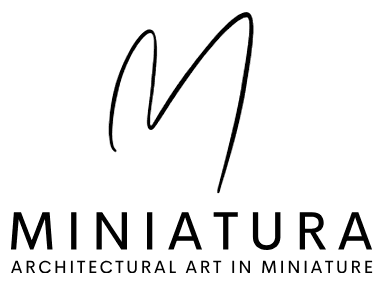From Blueprint to Masterpiece: The Step-by-Step Process of Building a Scale Model
MG
Behind every stunning architectural or custom scale model lies a detailed process that blends art, engineering, and precision. At Miniatura, we don’t just build models, we craft three-dimensional experiences that capture vision and spark imagination. Clients are often curious: How does a set of technical drawings become a miniature masterpiece? Let’s walk through the journey from blueprint to finished model.
Step 1: Understanding the Vision
The process begins with conversation. We sit down with the architect, developer, or business owner to understand the purpose of the model. Is it for a real estate sales center? A museum exhibit? A product launch? A trade show? A Franchise store? Each use case influences the level of detail, scale, and presentation style. This first step ensures that the finished model communicates exactly what the client needs.
Step 2: Gathering the Right Materials
Next comes the collection of reference materials: CAD drawings, blueprints, renderings, or sketches. These documents act as the foundation of the model. Our team reviews every measurement and design feature to ensure accuracy. For projects without detailed plans, like historical reconstructions, we combine research with creative interpretation to bring the concept to life.
Step 3: Choosing the Scale
One of the most important decisions is the scale. A 1:50 model may include intricate interior furnishings, while a 1:500 model might focus on showing a building’s relationship to its urban surroundings. Choosing the right scale balances cost, detail, and the purpose of the model. At Miniatura, we guide clients to the scale that best communicates their vision.
Step 4: Model Construction
Here’s where the magic begins. Using a blend of traditional craftsmanship and modern tools like 3D printing, CNC milling, and laser cutting, we begin building the model piece by piece. Walls, windows, landscaping, and even running water and lighting elements are carefully assembled. Materials may range from acrylic and Russion plywood to resin and metal, depending on the desired finish. Matched colours are added with paint and printed vinyl to make the model look like the real thing.
Step 5: Adding Detail and Texture
The finishing stage is what turns a good model into a showpiece. At Miniatura, we pay close attention to textures, colours, and details. Grass is flocked, water features are painted with realism, and lighting is added to highlight architectural features. It’s this attention to detail that makes clients say, “Wow, that’s exactly what I imagined.”
Step 6: Delivery and Presentation
Once complete, the model is carefully packaged and delivered to its destination. We also can provide a travel case for cars, truck train and air. In many cases, we help set up the display for sales centers, exhibitions, or corporate events. Seeing clients gather around the model and immediately engage with it is the most rewarding part of the process.
Why the Process Matters
A scale model is more than just a miniature, it’s a storytelling tool. The process ensures that every element aligns with the client’s goals, whether that’s selling condos, educating museum visitors, or presenting to franchisees, customers or investors.
From the first sketch to the final polish, building a scale model is a journey of collaboration, precision, and artistry. At Miniatura, we take pride in turning blueprints into masterpieces that inspire confidence and excitement.
Ready to bring your vision to life? Contact Miniatura today and let’s start building your masterpiece.
© 2025 Miniatura Inc. All rights reserved.
